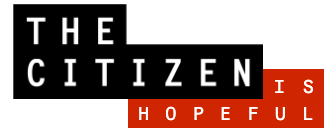The Alt-Right Is the Modern, Hideous Face of White Supremacy
ANIS SHIVANI
WASHINGTON: Three US scholars discuss the emergence of the alt-right and what it implies for the country: Jeffrey Kaplan is associate professor of religion at the University of Wisconsin–Oshkosh. His books include “Radical Religion in America: Millenarian Movements From the Far Right to the Children of Noah“; “Nation and Race: The Developing Euro-American Racist Subculture“ (co-edited with Tore Bjørgo); and “The Emergence of a Euro-American Radical Right“ (with Leonard Weinberg).
George J. Michael is associate professor in the criminal justice faculty at Westfield State University in Massachusetts. He is the author of “Confronting Right-Wing Extremism and Terrorism in the USA“; “The Enemy of My Enemy: The Alarming Convergence of Militant Islam and the Extreme Right“; “Willis Carto and the American Far Right“; and “Theology of Hate: A History of the World Church of the Creator.”
Michael Barkun is professor emeritus of political science in the Maxwell School of Citizenship and Public Affairs at Syracuse University. His books include “A Culture of Conspiracy: Apocalyptic Visions in Contemporary America“; “Religion and the Racist Right:The Origins of the Christian Identity Movement“; and “Chasing Phantoms: Reality, Imagination, and Homeland Security Since 9/11.”
1. What is the alt-right?
Is the contemporary “alt-right” a continuation of late 20th-century American white supremacist movements, or are there new components? Besides the new use of technology, are there ideological elements to the alt-right that we should take notice of? What happened to some of the exotic ideas floating around in the 1980s and ’90s, such as occult Nazism and pagan religions? Did they become assimilated into the alt-right, or did those more esoteric veins fade out?
Jeffrey Kaplan: The so-called alt-right seemed to descend from the ether in the fading twilight of the Obama administration. The alt-right quickly seized the stage as the acceptable face of the radical right, which since the violence of the 1980s had been demonized and banished from the American public square. The process is common enough in American extremism. In 1963 the racist fringe was banished from the anti-communist fervor of the John Birch Society, just as the 19th-century “Know Nothings” came to be excluded from the politer society of American nativism. America, after all, is a vast smorgasbord in which individuals, religions and political movements may pick and choose among the tropes on offer.
The alt-right follows this pattern to a T. Picking and choosing from a variety of established conspiratorial, racist and outright paranoid ideas, leavened with a catchy jargon like “deep state” — which is far more PC than ZOG or Zionist Occupation Government, which held primacy in the American radical right since the 1970s — the alt-right was tailor-made for the discontented and dispossessed faithful of the far right.
Following British sociologist Colin Campbell in the 1960s, scholars have borrowed the term “cultic milieu” to describe the process by which oppositional individuals sample ideas, theories and wild suppositions that are the stuff of which movements are born, flourish and, most often, perish in anonymity, completely unknown to the dominant culture. This is the origin of the alt-right, and will most likely be its fate as well.
The occult and esoteric racist movements from the fringes of National Socialism to elements of explicit Satanism still exist in the wilderness of the cultic milieu, but their numbers are much diminished. The peregrinations of David Myatt are a case in point. Myatt, who drifted from Buddhist beliefs to National Socialism under the spell of Colin Jordan in Britain, went on to found the Order of Nine Angles, the most successful racist esoteric organization combining Satanism and National Socialism in the 1980s and ’90s.
Tiring of the scene and despairing of the quality of the recruits, he took his shahada and converted to radical Islam in the shadow of 9/11 and 7/7. In this he moved from the most distant fringes of the cultic milieu to a more potent global system of belief. Lately, however, he has taken on the cross, converting to Orthodox Christianity and embracing a message of universal love and reconciliation. Myatt is the cultic milieu personified and living proof that the esoteric white supremacist ideas of the 1980s live on, albeit on life support.
The alt-right is, however, different in significant ways from its predecessors. For one, it is not simply an American made-for-export idea, as was the racialism that American intellectuals marketed internationally in the 19th century as racist anthropology or that which the anti-communist zealots spread with much less success in the 1950s.
Rather, it mixed American nativist tropes with the growing fears of immigration and Islamization that have become acute in the European Union. More remarkable still, it fell easily under the spell of Vladimir Putin’s Russia, whose hybrid warfare campaign against the West and the world is simply a 21st-century update of the Soviet disinformation campaigns that were called Active Measures in the Cold War. Putin’s Russia now caters to the far right globally, and as the Trump scandals now unfolding in Washington indicate, found in the alt-right perfect rubes who, for a few dollars and a grand delusion of power and global glory, would gladly ignore logic and history in pursuit of a dream of an America relatively untroubled by such putative enemies as Black Lives Matter; immigrants bent on rape, rapine and terrorism; and the dread legions of the politically correct.
George J. Michael: There is some continuity between the alt-right and extreme-right groups from the late 20th century. David Duke, for example, has long been a prominent spokesman of the white nationalist movement. In fact, he in some ways spearheaded a change in the ideological direction away from a supremacist/hate orientation to a more identitarian orientation.
The exotic ideas, including occult Nazism and pagan religions, continue to inform the movement. Mostly, their influence can be found in the forms of iconography informing white nationalist websites and assorted insignia. Norse neo-paganism is often seen as a more suitable religion for white nationalists, insofar as contemporary Christianity is seen as philo-Semitic and pro-multiculturalism.
Michael Barkun: The sudden public emergence of the alt-right during the 2016 presidential campaign raises the question of whether it is simply the continuation of a long-standing white supremacist movement or constitutes a completely new development. That is not an easy question to answer, since the alt-right is not itself a cohesive movement. Rather, it is best understood as a set of groups and individuals that share a family resemblance, knit together by an intense hostility to immigration and a fear that the white population and what the alt-right conceives as Western culture will be submerged in a non-white sea. The alt-right is dominated by white nationalists and contains anti-Semites as well as some neo-Nazis, but also others of a less reprehensible stripe.
The more interesting and disturbing issue is the alt-right’s rising visibility. Whatever people mean by the alt-right, it is an element of right-wing extremism that suddenly became a factor in Donald Trump’s campaign. Its highly vocal support for Trump was widely covered by the media, the attitude of the campaign toward it was analyzed, and its possible electoral effect was discussed, even though its numbers appeared minuscule and no figure of any political stature was known to be associated with it. That so seemingly marginal a group of political actors should have attracted so much attention is itself odd — indeed, in hindsight, now that the campaign is over, it seems stranger still.
Yet the public emergence of the alt-right is on reflection a manifestation of a larger transformation in American culture — namely, the gradual penetration of the fringe into the mainstream. This is a development that transcends politics, although it has important political implications. It began in the early 1990s and has thus been underway for about a quarter of a century. Conspicuous examples have appeared in popular culture, including Dan Brown’s best-selling novels with occult and conspiracist themes, as well as “The X-Files“ television program, and it has been critically accelerated by the internet and such social media as Facebook and Twitter. Without the traditional barriers of editorial gatekeepers, fringe material could now access and command mass audiences. Just as fringe themes could penetrate popular culture, so fringe politics is no longer shut up in segregated subcultures.
We see this, too, in the avid popular consumption of conspiracy theories, and there has been no greater consumer of them than Donald Trump himself. Trump, after all, was the first high-visibility proponent of the Obama “birther” legend. During the campaign he gave a half-hour interview to Alex Jones, the country’s leading purveyor of conspiracy theories. Trump’s constant campaign refrain of immigrant wrongdoing smacks of a plot by foreigners to destroy America.
It is scarcely surprising that against this background the alt-right’s appearance acquired a certain quasi-legitimacy, despite its white supremacist credentials. It seemed to be simply a slightly more strident set of outsider anti-immigrant propagandists, in a campaign that already had an outsider candidate.
The role of the alt-right in the 2016 campaign, alongside the broader movement of fringe motifs into the mainstream, suggests a political future that once seemed inconceivable: the potential public re-emergence of a white supremacist organization, something not seen in America since the Ku Klux Klan of the 1920s. While still unlikely, the 2016 trajectory of the alt-right may prefigure more extreme open white supremacist political forays in the future.
2. The strength and leadership of the white supremacist movement
How strong is white supremacy in this country? Is it getting stronger, is it a declining movement or has it remained stable from when you first began your research? Was the 1990s Patriot movement the heyday of white supremacy? Are there things people label “white supremacy” that we should more properly put outside that framework? Which white supremacist group(s) do you find most intriguing today from a scholarly viewpoint?
Kaplan: White supremacy, like the poor, will be with us always. It is the nagging voice in even the most racially enlightened among us when they find themselves walking at night in Hyde Park in Chicago or contemplating a trip to Detroit. Once, it was a mainstream idea as many of the most idealistic young American men, fired by the racial threat depicted in D.W. Griffith’s “The Birth of a Nation,” sent their money to the mail-order Klan in exchange for a newsletter, a bizarre lexicon and a copy of the “Kloran.” With the legislative victories of the civil rights movement and a concerted push from Hollywood, it faded from polite society and the movements that held true to the racist call were banished to the most distant fringes of the cultic milieu.
This is where I found them when I began my research among their number in the late 1980s. They were a battered and demoralized lot. Identity Christians held fast to their esoteric interpretations of the Bible; National Socialists treasured their SS-inspired regalia and propitiated the shade of Adolf Hitler as if the Second World War were merely on hiatus; and Odinists drank bloats, rode motorcycles and formed prison gangs. The Patriot movement was never really among their number. Like the Birch Society of the 1960s, race for them was a distraction from the more important work of decoding the manifold conspiracies which, in the words of the iconic (and African-American!) Last Poets, “Keep the people asleep and the truth from being told.”
Early in the new millennium, I left the world of participant/observer research into the radical right in search of new and more potent oppositional ideas. None of the white supremacist constellation were intriguing simply because no new ideas, fresh movements or visionary leaders were on the horizon. I would argue, perhaps alone in this forum, that white supremacy as we have known it remains for the moment moribund. What we see today, the red meat of the alt-right and the popular fears that led to the election of Donald Trump, speaks to broader dreads — Islamophobia, immigration and the ever-present “other” — rather than an appeal for White Power. Racism is a powerful ingredient in the stew, but it is no more the leitmotif of what we are seeing today than is traditional “America First” nativism.
Michael: That is really the $64,000 question. It is very difficult to quantify the size of the white nationalist movement in America. There is no viable political party that advocates for its interest, unlike far-right parties in Europe.
The movement seemed to have gone into decline during the 2000s. The movement suffered a number of casualties as several leaders died (e.g., William L. Pierce, Sam Francis, Richard Girnt Butler and Willis Carto) and a number of others were arrested and incarcerated (Matt Hale, Chester Doles, Kevin Alfred Strom).
The Patriot movement differed quite a bit from the white nationalist movement over ideology, to wit, on the issue of race. The Patriot movement began a steep decline not long after the 1995 Oklahoma City bombing (as measured by the number of groups compiled by the Southern Poverty Law Center). However, in recent years, the movement seems to have reinvented itself under the label of “preppers” and once again is gaining momentum.
The late 1990s seemed to be the heyday for the white nationalist movement in America. The movement had not suffered any major repression from the federal government since the Fort Smith sedition trial of 1988. During the 1990s, the movement took advantage of the fledging medium of the internet to get its message out to a larger audience. But after 9/11, the movement experienced quite a few prosecutions from the federal government. Moreover, after 9/11, the American public did not seem receptive to the white nationalist movement’s message of white racial solidarity. After 9/11, there was an upsurge of American patriotism. Conservative-leaning Americans were not amenable to white separatism; instead, a new form of patriotism gained currency that viewed the country as under attack from anti-democratic, religious extremists in the form of militant Islam. The extreme right’s critique of the U.S. government’s pro-Israel foreign policy seemed unpatriotic. As a result, the extreme right languished for quite some time during the 2000s.
In recent years, however, issues involving race have gained great salience, including immigration, the ideology of multiculturalism and the prominence of language policing under the rubric of political correctness. The white nationalist movement was well-prepared to provide commentary on these issues. As a result, the movement seems to be gaining relevance once again.
Are there things people label white supremacy that we should more properly put outside that framework? Yes, for example, immigration. People who do not consider themselves to be white nationalists are nevertheless concerned about immigration because of its costs to taxpayers, as well as its impact on employment prospects for native-born Americans, the cost of health care, etc. Furthermore, many ordinary people are rejecting the restrictiveness of political correctness on the discourse in America.
Part Two:here
(Anis Shivani’s books in the last year include Soraya: Sonnets and Whatever Speaks on Behalf of Hashish: Poems. His book Assessing Literary Writing in the Twenty-First Century comes out in early 2017. This article has been made possible by the readers and supporters of AlterNet)
(Cover Photograph Salon)




